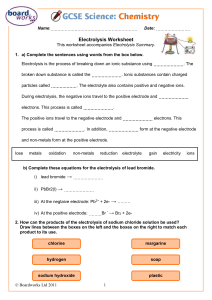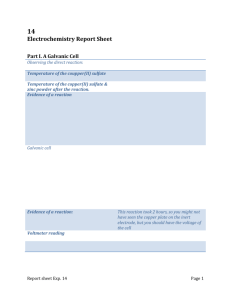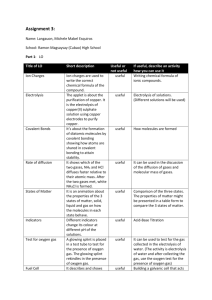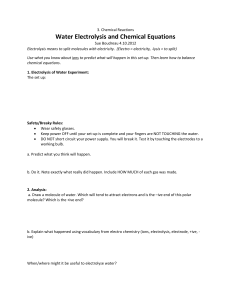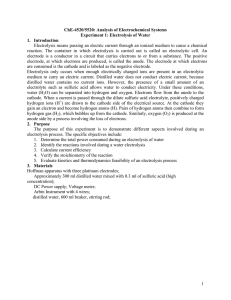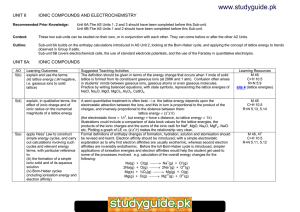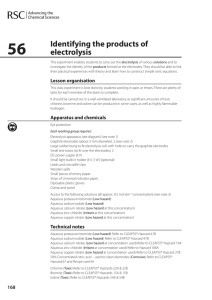pptx
advertisement
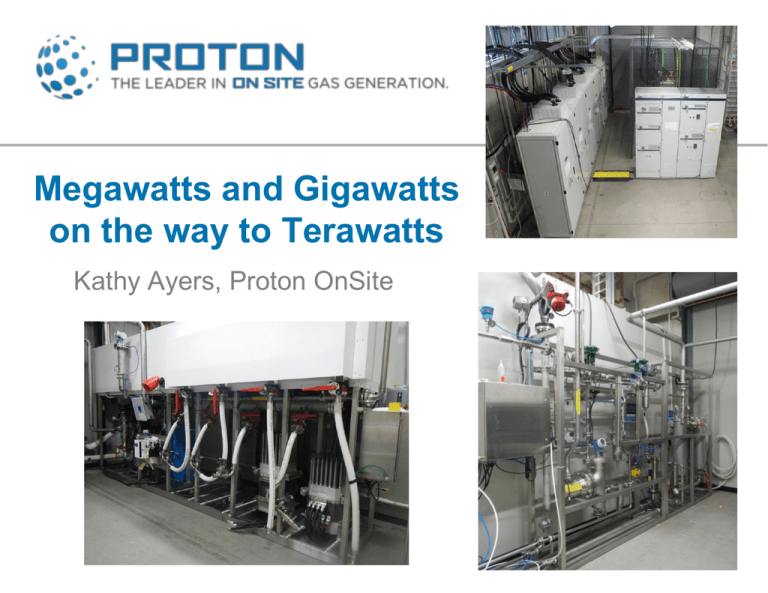
Megawatts and Gigawatts on the way to Terawatts Kathy Ayers, Proton OnSite Problem Definition • Need ~10 TW of carbon free energy by 2050 – Most renewables are intermittent – Energy storage at this scale is required • To address the terawatt problem, we have to install megawatts and gigawatts first – Leverage technologies at this scale now even if they “can’t” get to terawatts in the long term – Innovation often happens in well understood technology Page 2 Why we shouldn’t (just) wait for new/better/more ideal technology Storage needed now • Growing global energy needs • Increasing renewables % Renewable electricity in mix by geographic region, 2010 to 2050 New Technologies: • Lab validation to market penetration is >20 years • All technologies have challenges, we just haven’t found them all yet Page 3 Technology Development Timeline: Getting to 2050 (CO2 emissions) Stolten, October 2014: “The Potential Role of Hydrogen Technology for Future Mobility. How Can this Improve Our Life?” Page 4 How can we make an earlier impact? • Implement higher TRL tech – New technology is 10-12 years from any impact • Problem is here today: wind – 160 GW in Germany and China alone, stranding 20-40% – 270 GW expected by 2020 • Even installing MW systems today takes time to get to GW • Shift at least 10 years for new technology Global installed wind ~400 GW Page 5 How Real is the 20 year Product Cycle? Tesla: an “agile and innovative” example Tesla Production History • Founded in 2003 – Existing, well established battery chemistry – Cars are not a totally new invention – Minimal sales till 2013 Toyota produces >10,000,000 vehicles/year • Even good ideas struggle – Almost went bankrupt in 2008 • Gigafactory expected to be running in 2017 – 18650 Li-ion battery has been sold since 1991 Page 6 Why does development take so long? • Not just about materials/performance • Manufacturing is its own science Efficiency – Cost and uniformity at scale • Durability testing takes time • Interactions can derail a system – Impact of tolerance extremes Electrode Structure • Design for safety and code compliance adds complexity Processability Durability Catalyst system example Page 7 The Risks of Shortcutting Development Laptop at Japan conference Navy stress test for submarine energy system Boeing 787 Dreamliner battery packs Page 8 Case Study: Importance of Renewable Hydrogen • Global demand >600 billion Nm3/yr – Largely driven by NH3 Flexibility as an energy storage medium Page 9 Impact 2% of US energy currently goes through H2 more than 95% by natural gas reforming If 2050 US H2 projections can be produced from renewables, it could cut 45% of all US carbon emissions • $118 billion in market revenues projected 2500 M metric tons of CO2 Slide courtesy of Bryan Pivovar, NREL 2016 H2 at Scale TWG Update 011916 10 Proton’s Experience: Timeline and Product Cost Evolution Starting from a well-established technology in 1996 $/kW vs. S-Series 100% 43% 28% 13% S-Series H-Series C-Series 6 kW 36 kW 180 kW 1 - 2 MW Year Introduced 2000 2004 2012 2015 Units Sold 450+ 200+ 22+ NA 1 6 30 200–400 1 Day 1 Day 1 Week 1 Day Six Pack Tube Trailer Jumbo Tube Trailer Jumbo Tube Trailers Input Power Megawatt Product Type H2 output (Nm3/hr) Generates Replaces Page 11 Figures of Merit for MW scale electrolysis • • • • • • Water usage: 1000 gal/day/MW Total electrode area: 27 m2/MW (~50 m2 of membrane) Cell current: ~1260 A Catalyst cost: $50K/MW ($50/kW) Hydrogen produced: 400 kg/day/MW Cars fueled: ~70/day (depending on storage) Comparison to Solar Fuels TRL: • Typical goal metric: 100 cm2 electrode at 10 mA/cm2 • Equivalent to less than 1 gram of H2/day Page 12 Is there enough platinum (and iridium)? Power per annual production (Rossmeisl, 2014): Pt Fuel cells: ~0.3 TW Ir Electrolysis: ~0.1 TW Need ~ 1-2 order of magnitude increase in activity to be relevant for global energy storage needs Core shell catalysts Pathways: 3M NSTF Spray deposition Page 13 Necessity can force innovation • Emissions control well beyond what was known to be possible Page 14 *Courtesy of Ellen Stechel, ASU MW Status • +500,000 cell hours accumulated to date on stack design Idle to Full Load in less than 10 sec Page 15 Opportunities and Challenges Page 16 The US Agency H2 Gap High pressure, separations Energy storage, non-H2 NASA ManTech DoD OE Electrolysis Needs H2 applications limited EERE AMO Cross-industry manufacturing $/kg focus; overall portfolio ARPA-E High risk, high reward Page 17 Need to Leverage Synergies What PEC can do for electrolysis What electrolysis can do for PEC • Materials development • Balance of plant for water-gas management • Controls and safety circuit development • Validation of large scale H2 production • Integration experience – Ion exchange membranes (low H2 permeation) – OER catalysts – Non-PGM catalyst supports • Manufacturing – Large scale catalyst synthesis – Electrode fabrication methods Page 18 Conclusions • Need to be realistic about the timeframes for technology development • Government funding challenges to be addressed • Address near term needs as well as new science and discovery • Find synergies between both and drive progress Page 19


